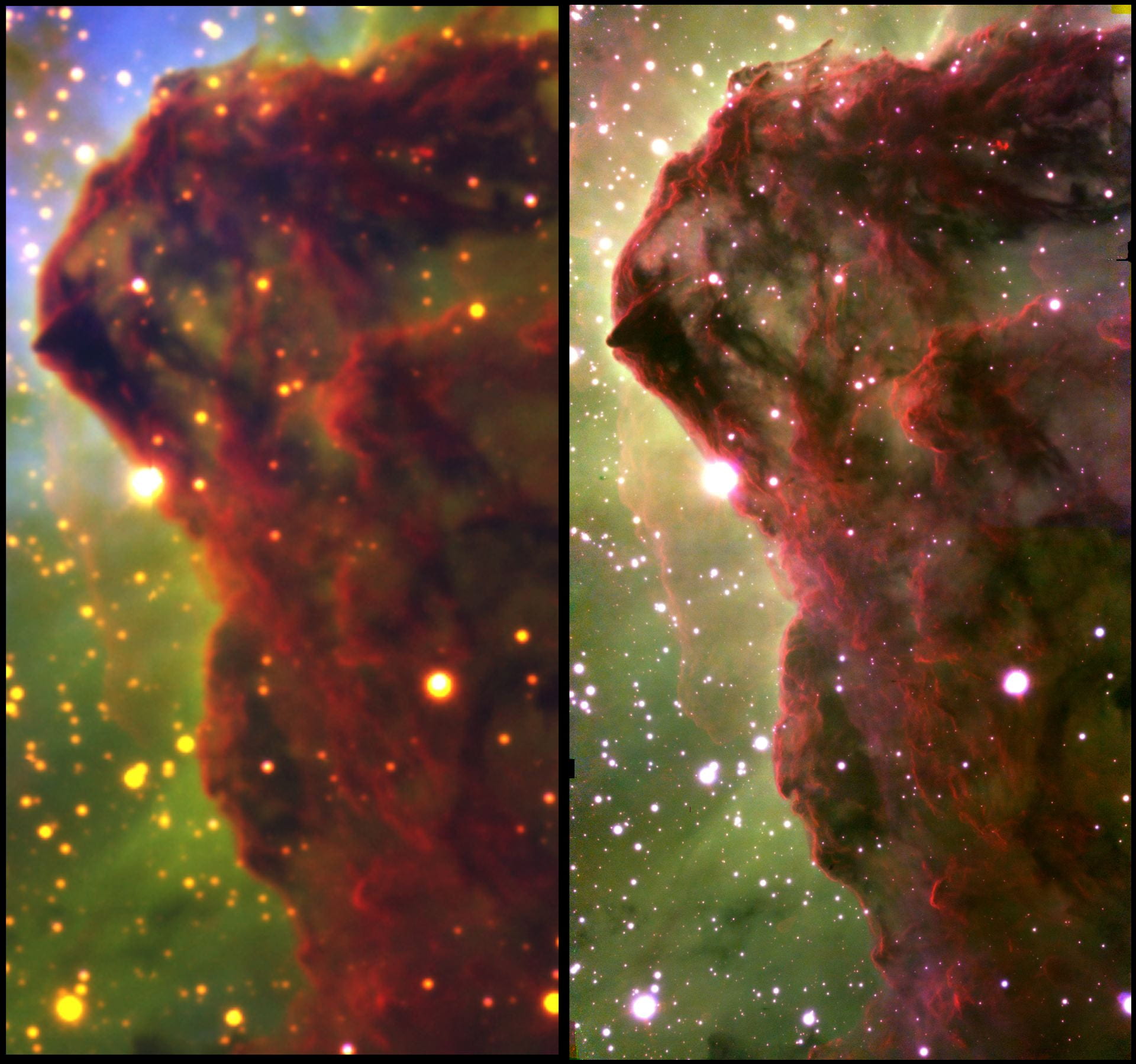The universe is filled with all kinds of spectacularly beautiful sights, but nebulas offer a special variety of cosmic wonder. These expansive molecular clouds act as stellar nurseries that contain radiant clutches of newborn stars behind layers of nebular gas.
Now, scientists have revealed unprecedented images of the iconic Carina Nebula, located some 7,500 light years from Earth, which display comparable resolution to NASA’s James Webb Space Telescope, a next-generation space observatory due for launch in 2021.
Captured by the Gemini South telescope in the Chilean Andes, the new view of the nebula reveals “a spectacular level of detail over a large area, and presage what the James Webb Space Telescope should achieve,” according to a study published this week in the Astrophysical Journal Letters.
“These images really show clearly for the first time how star formation proceeds in regions that have massive stars,” said Patrick Hartigan, an astronomer at Rice University who led the new study, in a short video. “Ultimately, this is a story of creation.”
The images, which were taken in 2018, spotlight the so-called Western Wall of Carina Nebula. The intense glare of young stars is irradiating the wall, causing it to slowly erode over time. The brilliant starlight permeates the region and illuminates its gassy structure, creating the perfect conditions for sharp telescope images.
Space telescopes, such as Hubble, are often able to take clearer pictures of space phenomena because they don’t have to contend with the distortive effects of Earth’s atmosphere. But even though it’s on the ground, Gemini South was able to snag high-quality observations because of its sophisticated adaptive optics system, which compensates for atmospheric aberrations.

“The results are stunning,” Hartigan said in a statement. “We see a wealth of detail never observed before along the edge of the cloud, including a long series of parallel ridges that may be produced by a magnetic field, a remarkable almost perfectly smooth sine wave, and fragments at the top that appear to be in the process of being sheared off the cloud by a strong wind.”
The mesmerizing glimpse inside the birthplace of a new stellar generation will help astronomers understand how stars form and evolve in molecular clouds across the galaxy.
Scientists think that all stars begin their lives in these bustling stellar nurseries. Eventually, they either set out on their own, as our Sun did, or explore space with companion stars, as is the case in the nearby Alpha Centauri system.
Many of the newborn stars captured in these images will go on to form planets, and some of those worlds will outlive our own solar system. When the Sun dies by shedding its gassy outer layers in about six billion years, it will also contribute to molecular clouds that will bring forth new batches of stars.
In this way, Gemini South’s observations don’t just show us an isolated object in deep space; they reveal a snapshot of an epic world-making cycle that has been going on for billions of years, and will continue to countless eons to come.
from VICE US https://ift.tt/36FKpzv
via cheap web hosting
No comments:
Post a Comment